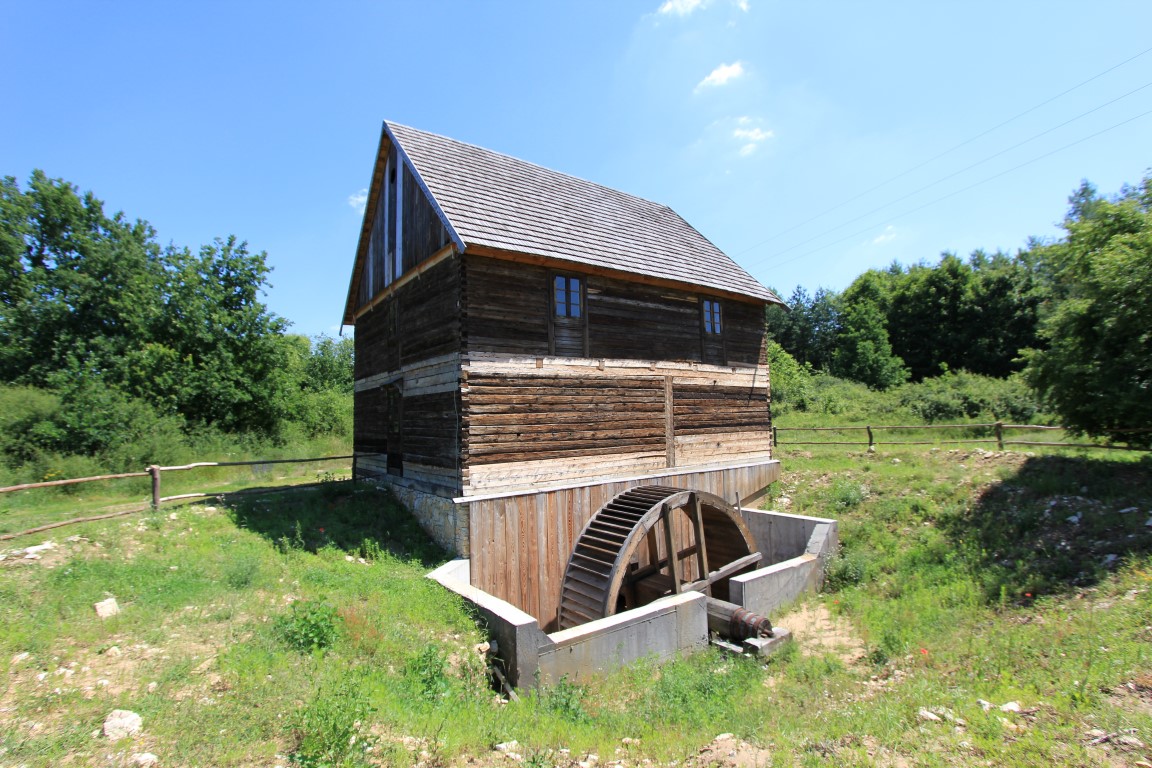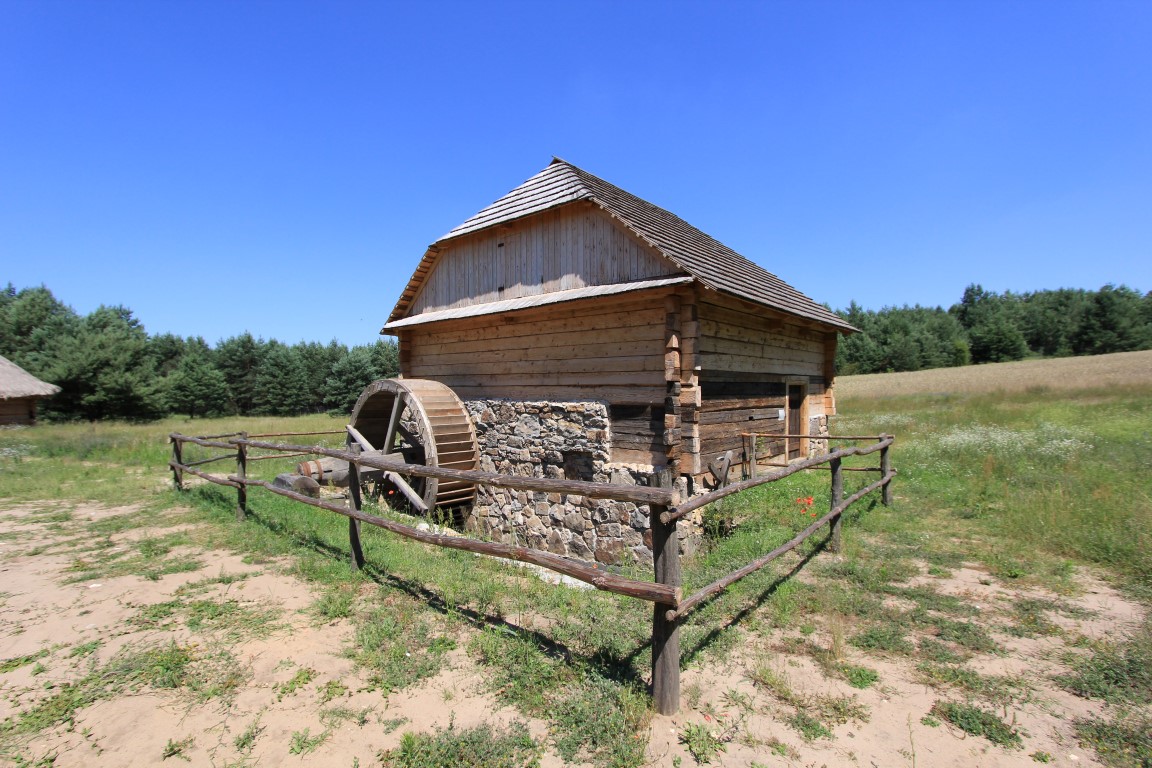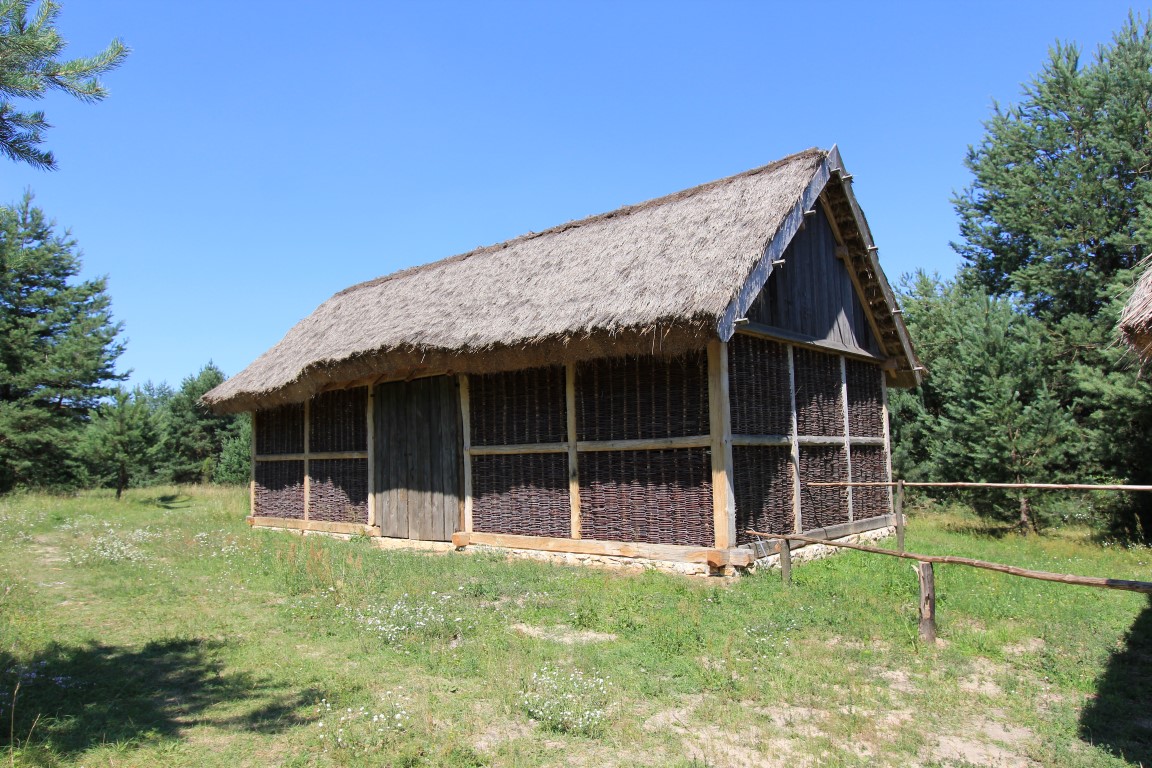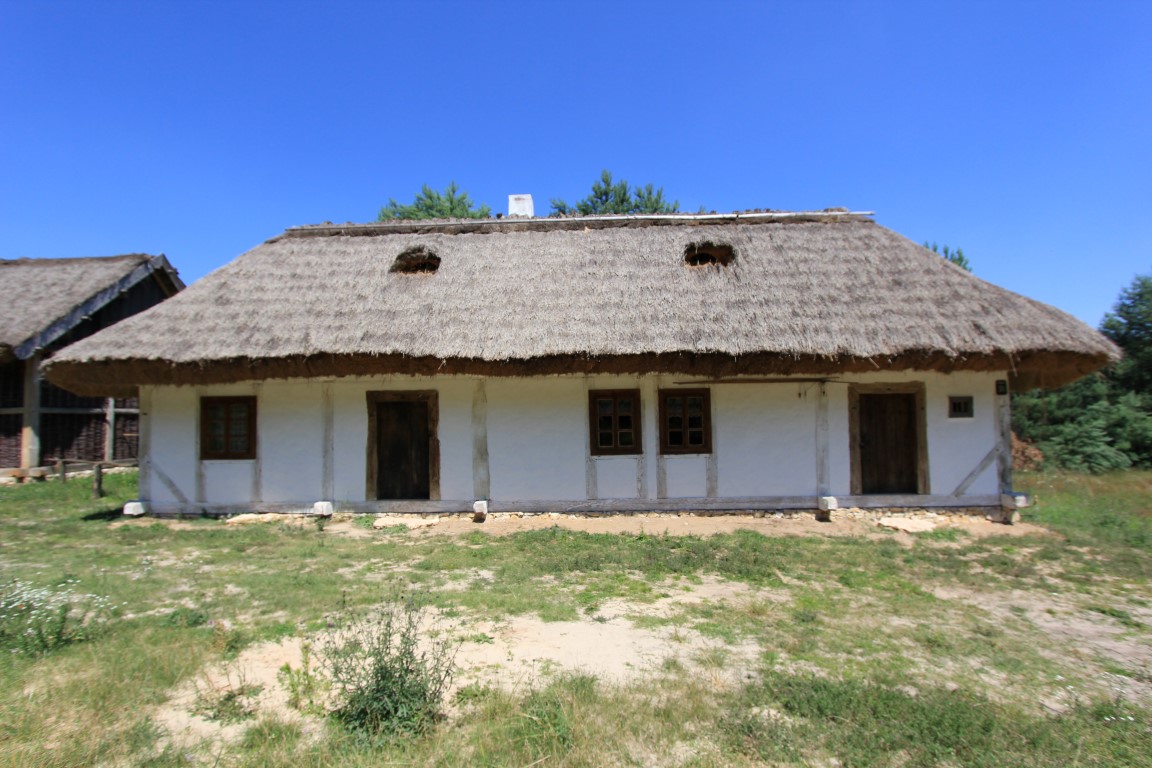Ethnographic Park in Tokarnia
Vistula sector
WATERMILL FROM PIASEK
This wooden water mill was built in 1931 on the Młynkowska River in the northern part of the village of Piasek. Its owner was Wacław Janiszewski. Originally, the mill, with the gable wall facing the road, was part of a milling homestead consisting of a dwelling house and a barn. The building is wooden, two-storey, with a gable roof covered with shingles. It was built of pine beams, angled with a double-sided oblique overlay. The mill was driven by a "water-filled" water wheel, it had two flood-gates - idle and working. Under the part of the building there was a basement, where the drive shaft and transmission wheel were mounted. On the ground floor of the mill there are elements of the transmission mechanism, including a large horizontal wheel as well as mood and pulleys. There were also working devices for the production of millet groats, buckwheat groats and flour sifters. On the first floor there were millstones - two ordinary "millers" and the so-called "Żubrownik" intended for grain cleaning. The mill from Piasek worked in the years 1931-1939 and from 1945 to 1970. The mill moved to the museum has a complete and efficient equipment allowing its launching today.
WATERMILL FROM PARSZÓW
The object is dated 1853. Originally it was placed by the Żarnówka river. According to family tradition, it was built by Antoni Miernik. The mill was a wooden building, erected in a log structure, on a rectangular plan measuring 6.90 x 7.12 m. A stone outbuilding with limestone mortar was also added to the main building. The mill from Parszów has a foundation and walls erected from beams engraved on a one-sided overlay with retaining "remnants". Entries to the mill and the stone outbuilding are guarded by two doors hung on iron hinges. The main building has a floor made of boards laid on joists, and in the outbuilding - compacted soil. The mill's operation was ensured by two "overshot" wooden wheels, from where the water drained out of a channel made of pebbles and stone blocks. Mill equipment consisted of a main drive shaft, transmission wheels and a vertical bolt moving stones in the roller mills. The mechanisms were placed on stone foundations. The water drain was constructed using wooden beams and boards, and the levers were made of hewn poles.
COTTAGE FROM NIEDZIAŁKI
A historic wooden building from the village of Niedziałki (Rytwiany commune) was probably built around 1860. The walls of the cottage were built of pine wood, in a log structure. It is covered by a hip roof with a rafter-purlin structure, covered with rye thatch. At the corners and on the ridge, the sheathing is reinforced with an additional layer of straw. The front roof has a movable flap to ventilate stored grain. The room has a kitchen stove with hood and heating stove, while in the hall, column chimney and additional kitchen stove. In all rooms there are clay floors. Under the roof made of boards and ceiling beams there is a beam, so-called "Siestrzan." The chamber has two windows. Doors and window openings are enclosed in nibs. The door is made in floor-mounted structure and is hung on wrought iron hinges. The living conditions of a poor peasant family from the beginning of the 20th century were recreated in the cottage from Niedziela.
BARN FROM CIUŚLICE
The barn from Ciuślice is a rural outbuilding erected in the second half of the 19th century. Its walls were made of pine beams in a transom structure, and the spaces between the beams were filled with a braid of thick wicker. The barn has a gable roof with a rafter and purlin structure, covered with thatched roof. The gables are vertically planked. The interior of the barn is divided into two sections and a centrally located, pass-through field.
COTTAGE FROM OSTROWCE
Fisherman's house
The house was built in the years 1840-1850 by Walenty Kaczor, a peasant from the village of Ostrowce (commune of Nowy Korczyn). It is a wide-front, one-bay cottage, consisting of four rooms in the layout: room - hall - room - chamber. The building made of pine, is built in the post-and-plank structure, the gaps between the beams were sealed with clay. The cottage is covered with a four-span roof with a rafter-purlin structure, covered with thatch. The object has four windows - one in a small room and three in a large room. In some rooms clay floors so-called "polepas" were laid, in the chamber a floor made of pine boards. The room has a kitchen stove with a baking tray and a hood, a bread oven and a heating oven with a large area for sleeping (mainly during winters). In the hall, in the chimney, there is a characteristic rectangular recess, the so-called "Gruba". The small room has a kitchen and heating stove. The connection of two stoves to one chimney in the attic deserves attention. The cottage from Ostrowce together with the barn building from Ciuślice form a small farm, located on sandy grounds, surrounded by a picturesque, young pine forest. An exhibition presenting the fisherman's pen from the 1930s will be organized in the buildings.







 Zakup współfinansowany ze środków Unii Europejskiej w ramach Europejskiego Funduszu Rozwoju Regionalnego na lata 2014 – 2020
Zakup współfinansowany ze środków Unii Europejskiej w ramach Europejskiego Funduszu Rozwoju Regionalnego na lata 2014 – 2020